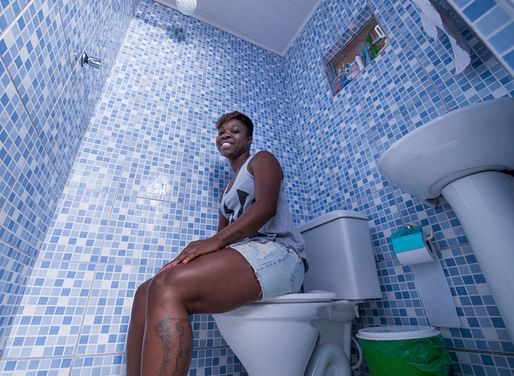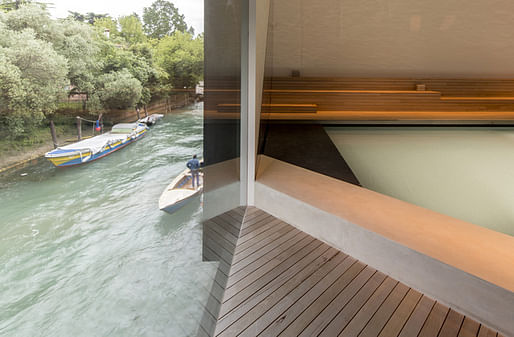

This year's Biennale has tried to raise fundamental issues around the role of the architect through social and economic issues. Challenges of social inequality, housing, urbanisation, are found across the world but perhaps they are nowhere more apparent than in the cities of Brazil.
The Curator of the Brazilian Pavilion, Washington Fajardo—architect, planner, government and advisor to the Rio de Janeiro Mayor—aimed to "present the stories of people who struggle for and effect change in the face of institutional passivity in the nation's big cities." These are often platitudes but in the Brazilian show there is a depth and reality that may not be at first apparent, it is a serious show dealing with serious issues. Through the title, "Juntos [Together]", the pavilion exhibits a number of projects across Brazil. One example being Programme Vivenda, a government supported program in São Paulo that brought about small changes through a DIY support program for favelas. At the same time, the architectural aspiration emerging from the design strength of Lina Bo Bardi was also on show.

In China, social inequality and housing disparities may not be so apparent as Brazil but the urbanisation and the speed of change has been both remarkable and frightening, with the difficult consequences becoming more apparent. The China Pavilion is a reaction to that, responding to the China’s government edict to move away from non-traditional designs and international architects’ designs. It looks back through a number of exhibits to a slower paced China with materials and examples from small scale and historic interventions that reflect it’s Daoist traditions.
Liang Jingyu, the curator of China's national pavilion, looked to tackle the issue of the "ignored front" of modernization, namely the "dignity, welfare and equality" of all citizens. Under the theme ‘Daily Design, Daily Tao’, the Chinese Pavilion shows 10 projects that reproduce traditional values and ways of life that appear lost to China’s "great leap forward and over". The Chinese Deputy Minister of Culture Yang Zhijin stated at the pavilion's opening, "the exhibition is about things and designs that satisfy people not by introducing a new future to replace the past, but by polishing the past and integrating it into daily lives." With the simple low traditional seats around each project, in the large dark Arsenale warehouses with soft classical music, it feels atmospheric and sensitive to the individual and the environment, but it does seem to deny the reality of modern Chinese city life and the multi-ethnic patchwork in the country.

Australia has a new pavilion, designed by Denton Corker Marshall, that opened at the Art Biennale last year as a black box inside a black granite box. This year a pool has been inserted within a white box as the celebration of the Australian love affair with external life and the lido in particular. The new building cantilevers over the canal and the dialogue between the canal below and the swimming pool above is both metaphorical and literal as the light reflects between the two. There is a depth and sophistication where the social is celebrated through life rather than a projection of change and possibility—there is a slight disengagement with Aravena’s theme, which is due to the fact the concept was being developed by Aileen Sage Architects with specialist designers to include a vast raft, even before the Biennale's overall theme was announced.

No Comments
Block this user
Are you sure you want to block this user and hide all related comments throughout the site?
Archinect
This is your first comment on Archinect. Your comment will be visible once approved.